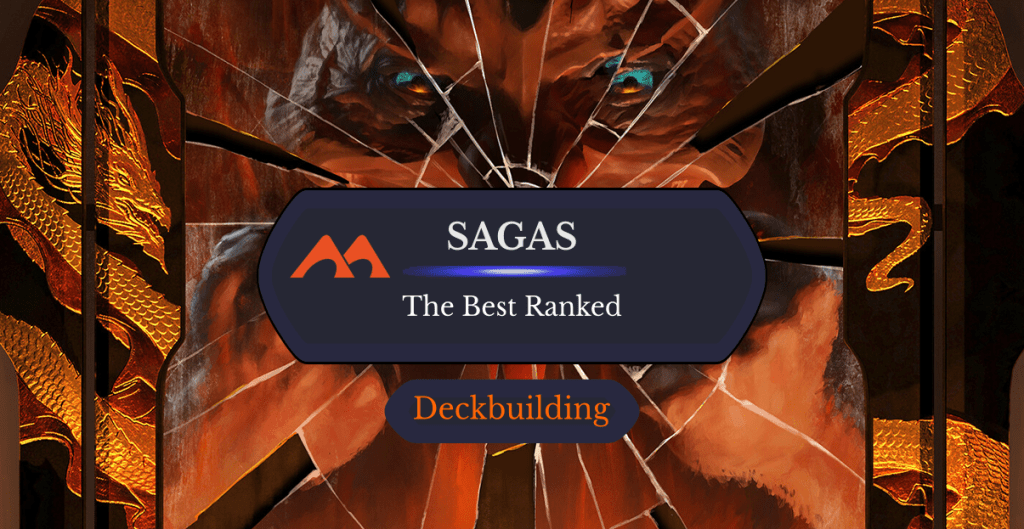
Reflection of Kiki-Jiki | Illustration by Joseph Meehan
Sagas are one of the newer card types, introduced back in Dominaria. They’ve quickly become a great addition to the game and have created a lot of fun interactions. Some of these cards, like Urza's Saga, are also very strong pieces for competitive decks.
Sagas are very cool from a flavor standpoint. Instead of representing a single event or action, they tell a story throughout each chapter of their effect. For example, There and Back Again tells the story of The Hobbit. The first chapter represents Bilbo getting the Ring and being able to sneak past things. The mountain you find represents The Lonely Mountain, and when the Smaug token you create dies, you get a bunch of Treasure to show how the dragon’s hoard was up for grabs after it was killed. This type of mechanical storytelling is a great way for players to learn about story events or a plane’s history if they aren’t fully aware of the lore.
The sagas here are some of the ones that I think are the best mostly from a mechanical standpoint. While this list is good for deck building advice, I’d also recommend just scrolling through a gallery of the game’s sagas when you have a chance. They’re fun cards to try and decipher the game’s lore with by studying the art and the effects to see what you think each chapter means.
What Are Sagas in MTG?
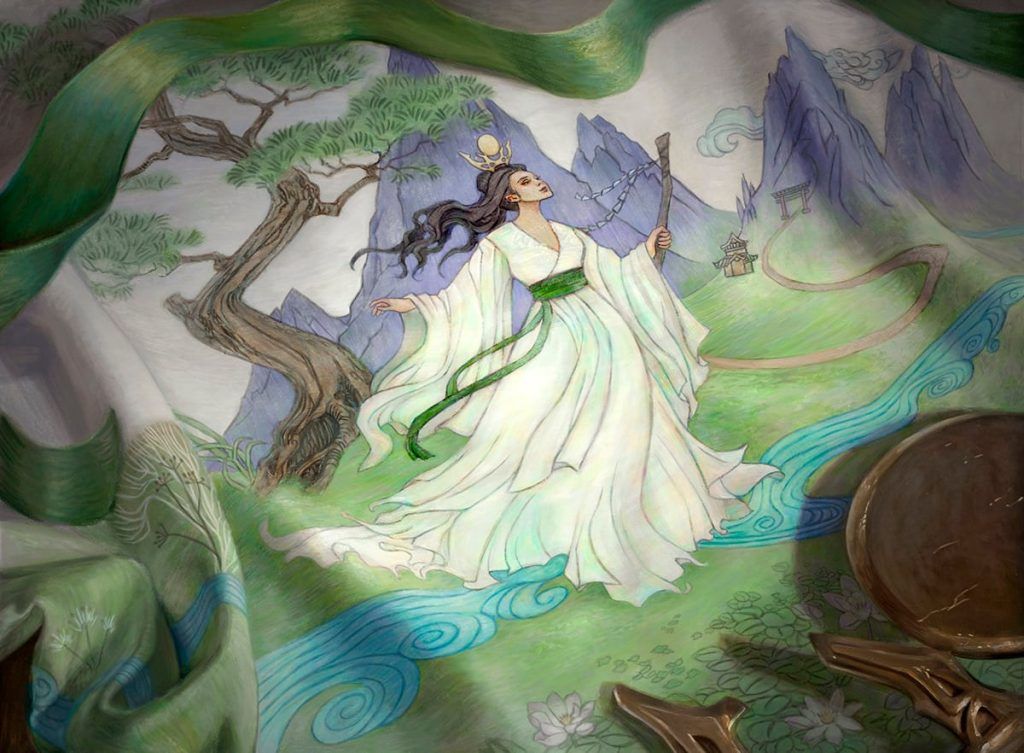
Likeness of the Seeker | Illustration by Lindsey Look
Sagas are enchantments that progress through a certain number of chapters. After your draw step each turn, you add a lore counter and activate the ability corresponding to the number of lore counters on it. After sagas reach their final chapter, they’re immediately sacrificed.
Honorary Mention: Greatest Show in the Multiverse

Greatest Show in the Multiverse is a very good saga, but unfortunately you can only play it if you’re playing with Unfinity or your playgroup is cool with breaking a few different rules. That said, if you’re able to play with it, it can be a lot of fun going through your collection and looking for cards by the same artist. It’s a good way to get to know some of the regular contributors to Magic and their unique styles.
#26. Long List of the Ents
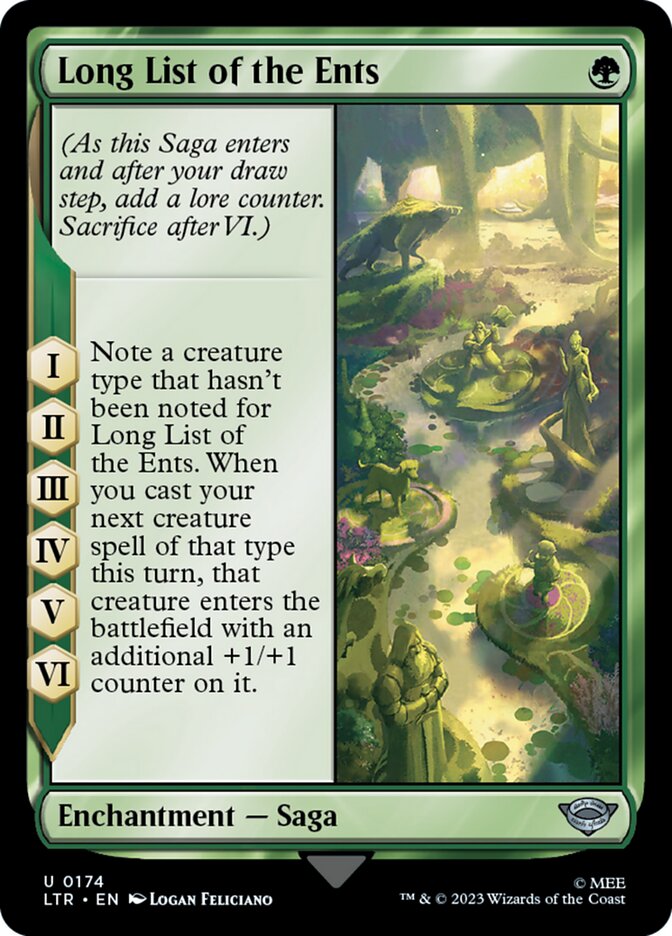
Long List of the Ents is an okay card for a deck that intentionally wants to play a lot of different creature types, like a Volo, Guide to Monsters deck. This card is mainly here because I think it’s a really big flavor win, as it perfectly represents the moment when the ents are debating whether Merry and Pippin are orcs.
#25. Fall of the Thran
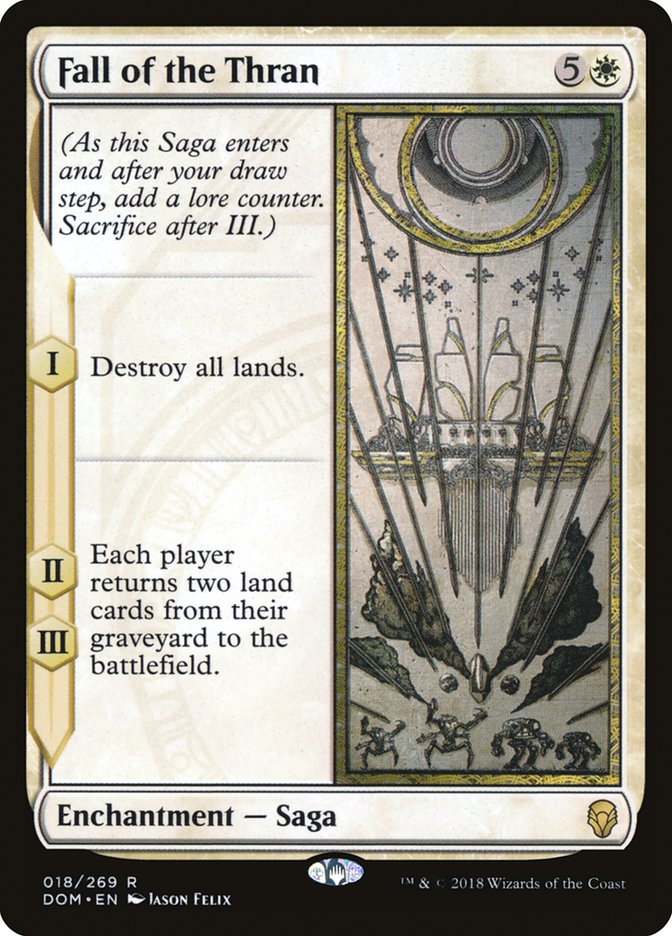
Fall of the Thran isn’t an “every deck” kind of card, but it can be helpful in certain decks. It can give you a nice advantage in decks that are built to play lands from the graveyard. It lets you recover more quickly than your opponents from this saga’s land destruction and pull ahead in the game. Of course, some of your opponents might not be too thrilled about you playing mass land destruction, so this one might necessitate a rule 0 conversation.
#24. Azusa’s Many Journeys / Likeness of the Seeker
Azusa's Many Journeys can be a good way to ramp early on. Its triggered ability on Likeness of the Seeker can also give you a good bit of extra mana. It also works well with combat tricks since it untaps your lands before damage.
#23. Korvold and the Noble Thief
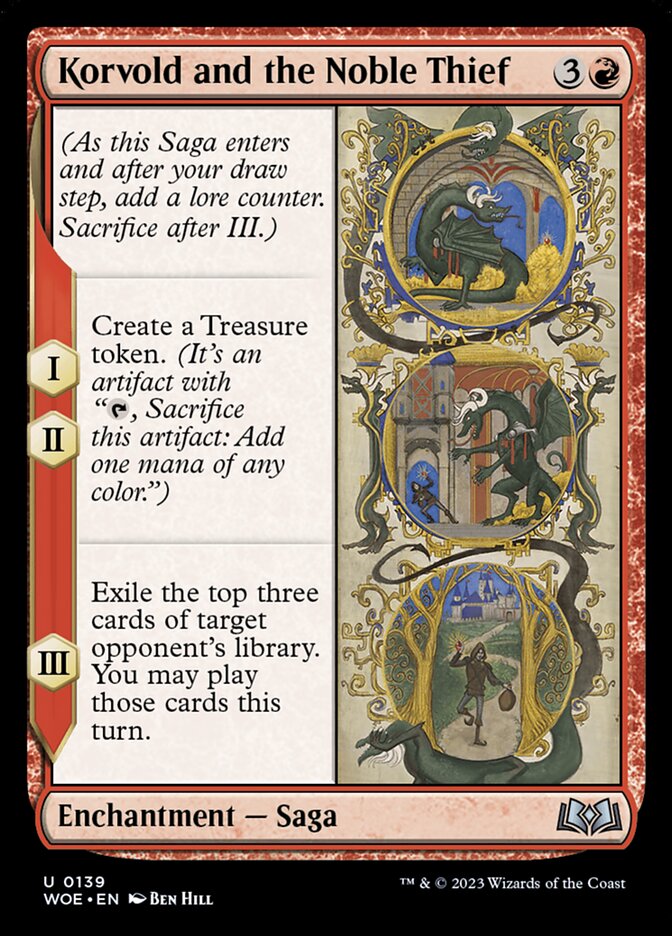
Korvold and the Noble Thief’s third ability can be a good way to both gain some resources for yourself while denying your opponent of them. The Treasure this card creates can help you cast cards that aren’t in your color identity that you get off your opponent’s deck. I found this card very helpful in Wilds of Eldraine Limited.
#22. Elspeth’s Nightmare
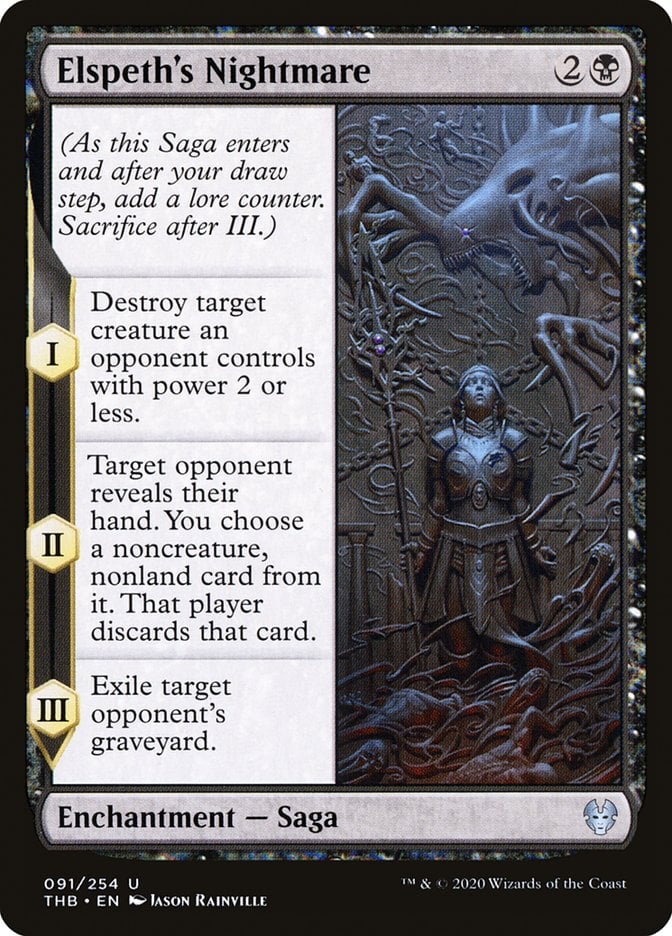
Elspeth's Nightmare is good early game removal since it can also help you avoid a threat in a player’s hand, and then exile it the following turn. While none of the effects are super flashy, this card is definite worth its mana value when you put them all together for only 3 mana.
#21. Jugan Defends the Temple / Remnant of the Rising Star
Jugan Defends the Temple is a good saga for decks that care about +1/+1 counters or modified creatures. The front side allows you to distribute a few counters, but the real power comes from Remnant of the Rising Star. This enchantment creature allows you to use any extra mana you have to buff your creatures. This means you’ll never have to waste mana on your turn, and drawing a weak creature later in the game isn’t such a dead draw.
#20. Jin-Gitaxias / The Great Synthesis
The Great Synthesis is a great source of card draw, and it can also give you quite an edge. You can replay all your own creatures for free while your opponents are forced to pay for their creatures back. You’re also likely to draw into a lot of other cards to play thanks to the first effect on this card. It would easily be one of the most powerful sagas in the game if you didn’t have to first transform Jin-Gitaxias into it.
#19. In the Darkness Bind Them

In the Darkness Bind Them is a good addition to a deck using one of the Grixis Sauron cards as a Commander. It fits well with the Nazgûl and the several Witch-king cards thanks to the wraiths it creates for you, and extra Ring temptation can be pretty powerful too. If this saga manages to stay on the board for all four turns, you can also do a lot of damage by stealing your opponents’ best creatures.
#18. The Mirari Conjecture

The Mirari Conjecture is a good bit of recursion, but its best chapter is definitely its third. Getting to copy all your instant and sorceries for a turn at no additional cost can give you a chance for a very powerful turn. This card also helped you take infinite turns in the old Rainbow Lich decks.
#17. Binding the Old Gods

Binding the Old Gods is a pretty comprehensive form of removal. Because its second chapter fetches a forest, you can grab a dual or tri-land with the forest type. It’s a bit of a joke that the last chapter of this saga rarely does much, but in truth it can be helpful in the right situation.
#16. One Ring to Rule Them All

One Ring to Rule Them All on its own can be a board wipe that also takes a good amount of life from opponents. It gets really good if you put it in a legends matter deck where you keep most of your board intact through the board wipe. Remember, your Ring-bearer becomes legendary, so if you have a non-legendary creature you want to save from the board wipe, you can do that too.
#15. Phyrexian Scriptures
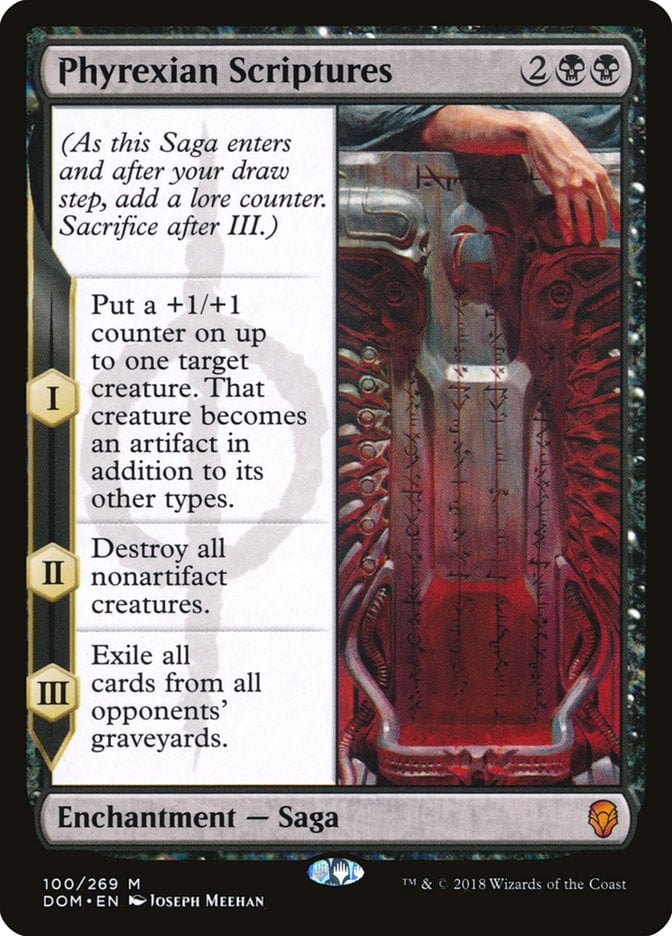
Phyrexian Scriptures can be a very powerful board wipe in decks that run a lot of artifact creatures. If you have a Necron Dynasties precon and are looking for cards to upgrade with, this one can be very powerful. It’s also nice that it allows you to save one non-artifact creature before the wipe goes off.
#14. The Antiquities War

The Antiquities War can be a powerful addition to artifact decks. Its first two activations help you sort through a huge chunk of cards and can let you grab something you may not have seen for quite a few turns. Its third chapter can be very impactful in a deck running a lot of artifacts and could possibly even be a finisher if you’ve got a big enough board state.
#13. Boseiju Reaches Skyward / Branch of Boseiju
Boseiju Reaches Skyward can help with making sure you keep hitting land drops and also thins out your deck. When it transforms into Branch of Boseiju it’s likely to be decently powerful thanks to all the lands it has already found for you as a saga.
#12. Huatli, Poet of Unity / Roar of the Fifth People
Roar of the Fifth People gives you a lot of value. The Dinosaur tokens are both solid power and toughness and also help with ramp after chapter 2 of this saga. Since the mana ability sticks around throughout the saga, you can likely cast the dinosaur you search for, then deal a lot of damage the following turn.
Huatli, Poet of Unity’s ETB effect makes you more likely to be able to transform it quickly, and it can be reliable mana fixing if you run Huatli as your commander. It’s also nice that it has no additional requirements to transform into a saga besides paying the cost.
#11. Sheoldred / The True Scriptures
The True Scriptures can have a very big impact on the game if it’s able to get all the way to its third chapter. What’s nice is that even if you just get the first chapter off, you still get a good bit of removal. Sheoldred is easier to transform than some of the other praetors, since it’s just checking for numbers of cards in graveyards instead of requiring you to do something.
#10. The Akroan War
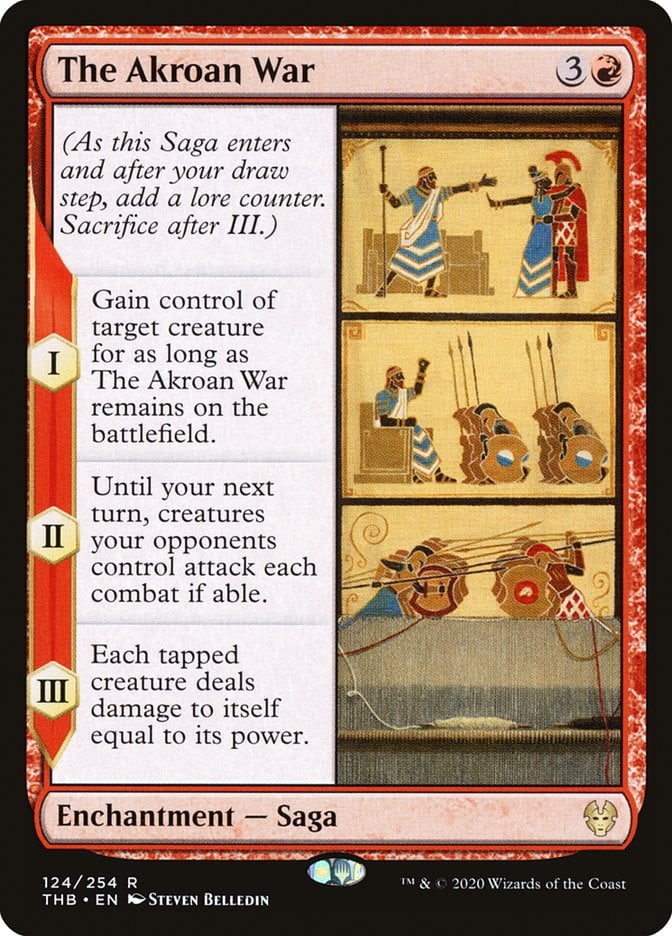
If used appropriately The Akroan War can do a lot for you. You can either take control of a powerful creature and use it for yourself for a few turns, but you can also pick a creature you want to sacrifice or block with to remove it from your opponent's side of the field. Forcing your opponents to attack opens them up to retaliation and lets you block creatures they might be intentionally keeping out of combat. A lot of creatures have power equal to or greater than their toughness, so the creatures you forced your opponents to attack with will likely end up destroying themselves when this saga resolves.
#9. Urabrask / The Great Work
The Great Work can do some serious damage to a player who’s running smaller creatures. Its third chapter’s ability can also give you access to a lot of powerful spells, which the Treasure this saga makes can help you cast.
Urabrask also has lots of benefits on the creature side. Although it might be tough to cast three instants or sorceries, if you do you’ll be able to transform Urabrask no matter what since it gives you an extra red mana when you cast your third spell.
#8. Kumano Faces Kakkazan / Etching of Kumano
Kumano Faces Kakkazan is a great turn 1 play. It can make another one of your early creatures a bit stronger, and when it transforms into Etching of Kumano you’ll get another quick attacker. This can be a good saga for a fast RDW deck and had a good little run in Standard for a while.
#7. There and Back Again
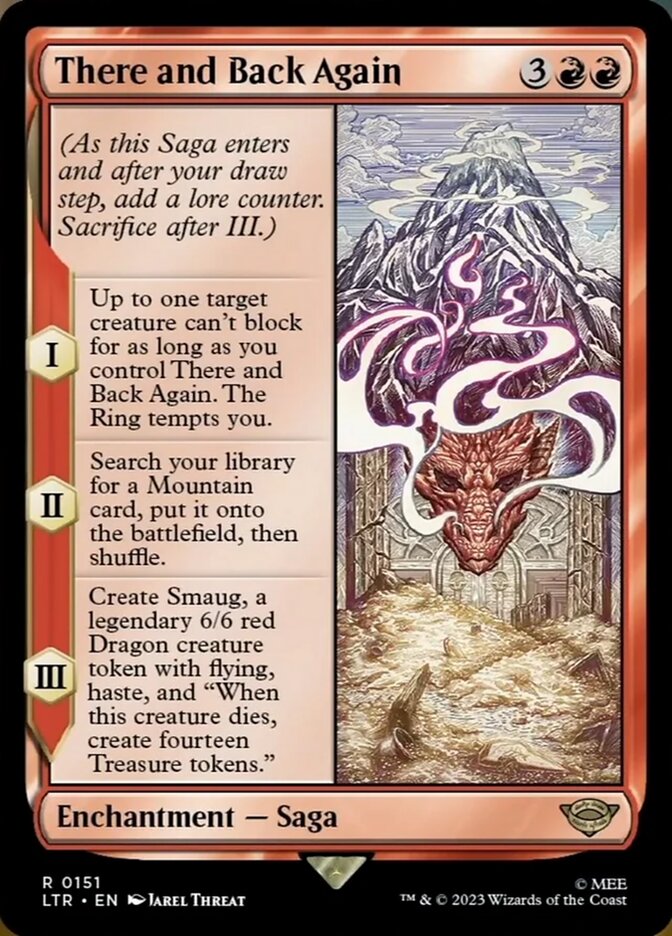
There and Back Again can help you get through your opponent’s defenses by stopping their best creature from being able to block. The ramp is nice, but the best part of the saga is definitely the Smaug token you get to create. It’s a powerful creature that your opponents will be worried about removing because of all the mana you’ll get from it.
#6. Elesh Norn / The Argent Etchings
The Argent Etchings gives you enough tokens to replace the creatures you sacrificed to transform it and gives you a few more. If you’re running other incubate cards, you’ll also get to transform your other Incubators for free. The following two chapters can help you do some serious damage and clear the board while allowing you to keep your Phyrexians.
Unlike other praetor sagas, Elesh Norn might honestly be the better side of this card to be honest. You can impose a serious tax on your opponents, especially if they’re running a lot of weaker creatures.
#5. The Eldest Reborn
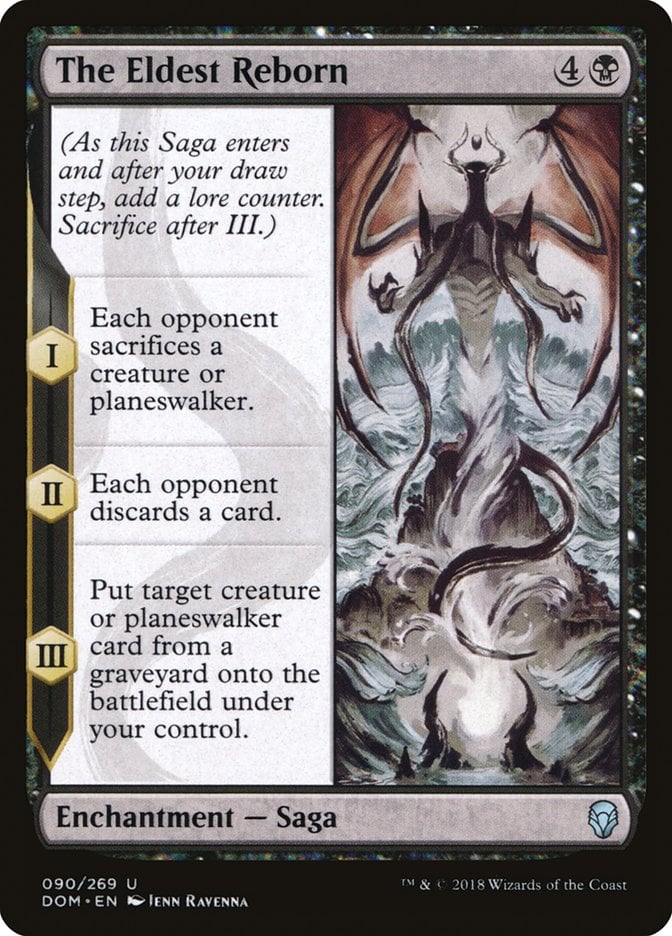
The Eldest Reborn is a good game piece for Commander since it affects all your opponents as opposed to just one. Between sacrifices and discards, you’ll be filling your opponents’ graveyards with more options for chapter 3.
#4. Kiora Bests the Sea God

Kiora Bests the Sea God significantly slows down an opponent, opens them up for attack, and gives you the pick of their permanents. It also gives you a massive attacker to hit them with while their creatures are tapped down.
#3. Elspeth Conquers Death

Elspeth Conquers Death can remove some big threats for you. It also significantly slows down your opponents for a little while, which can help you continue to get ahead. Chapter 3 can help you get back a creature that was removed or cheat out a creature that you’ve put in your graveyard. Overall, this card is just a lot of value for 5 mana.
#2. Fable of the Mirror-Breaker / Reflection of Kiki-Jiki
Fable of the Mirror-Breaker is a surprisingly good saga for just 3 mana. The token it creates can help make you a good amount of Treasure as long as you have someone to safely attack or a way to protect it. It can help you replace some bad cards in your hand or discard a card you want in the graveyard. Reflection of Kiki-Jiki can be very powerful, especially if you’re running creatures with good ETB or death triggers.
#1. Urza’s Saga
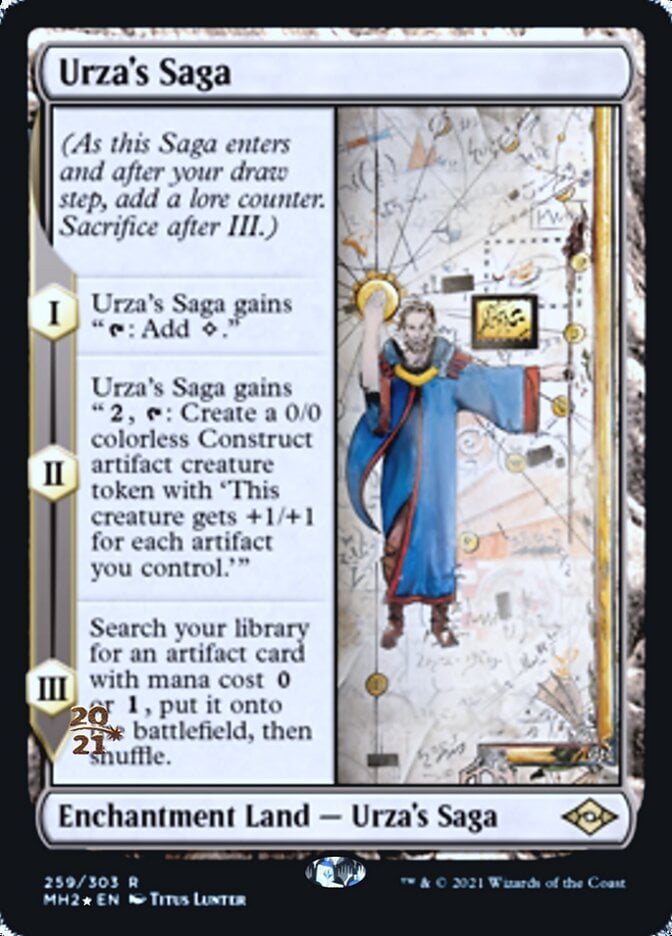
Urza's Saga is unique because it’s a saga land. Though you’ll lose it after a few turns, it can do a lot for you while it’s on the field and help you fetch some good artifacts. There are also plenty of builds that can help you get this card back from your graveyard, allowing you to continue making Constructs and fetching artifacts throughout the game.
Best Saga Payoffs
There are a good number of cards that give you an additional benefit when a saga reaches its final chapter. For example, Historian's Boon creates a Soldier when you play a saga, and a more powerful Angel when that saga finishes. Some cards like this can make good commanders, like Narci, Fable Singer and Tom Bombadil.
Some of the recent Doctor Who cards are also good ways to interact with sagas. Barbara Wright’s ability to give all sagas read ahead can allow you to skip some weak early abilities and skip right to the most powerful chapter. This way you don’t have to worry about your saga being removed before you get the best part. Ian Chesterton allows you to copy your sagas, though you’ll need a lot of mana to copy some of the more powerful ones.
Wrap Up
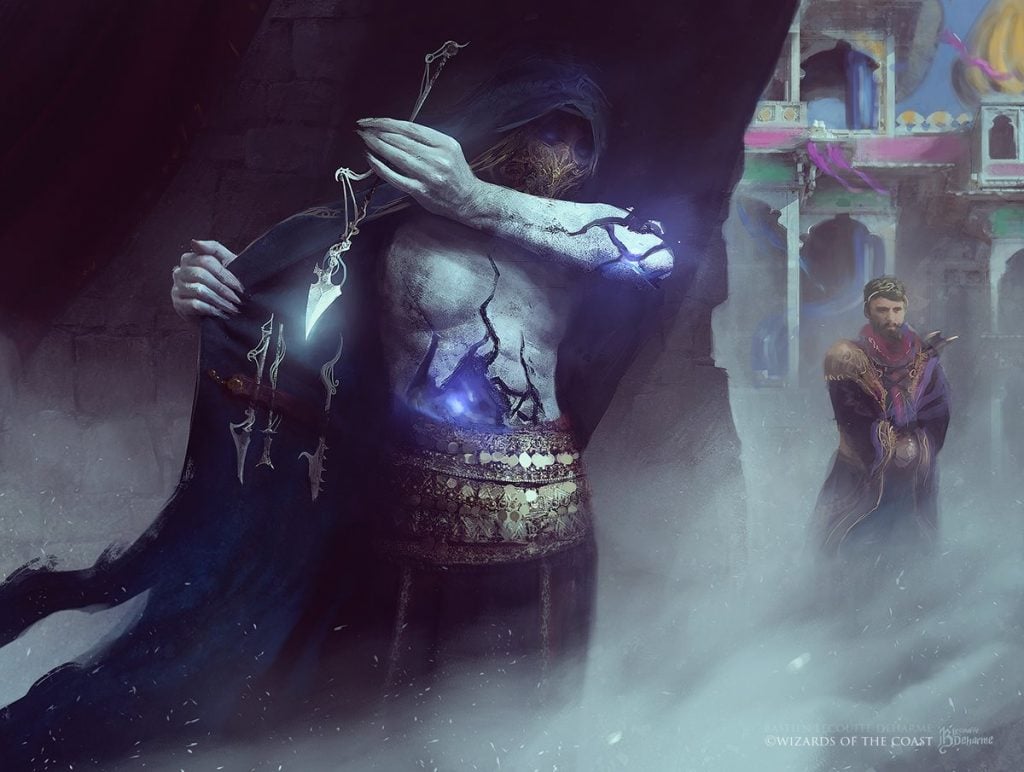
Tidy Conclusion | Illustration by Bastien L. Deharme
Sagas are some of the more unique cards in Magic, and some are also very powerful. The best sagas are the ones that give you a lot of value for their initial cost, and whose chapters all contribute something meaningful. This way, even if they get removed before the final chapter, you’ll still have gotten something for your mana.
Which is your favorite saga? What other cards do you think do a good job of telling Magic’s story? Is there a specific plane you’d like to see sagas from? Let me know in the comments or on Draftsim’s X (formerly Twitter).
Thank you for reading, and see you next time!
Follow Draftsim for awesome articles and set updates: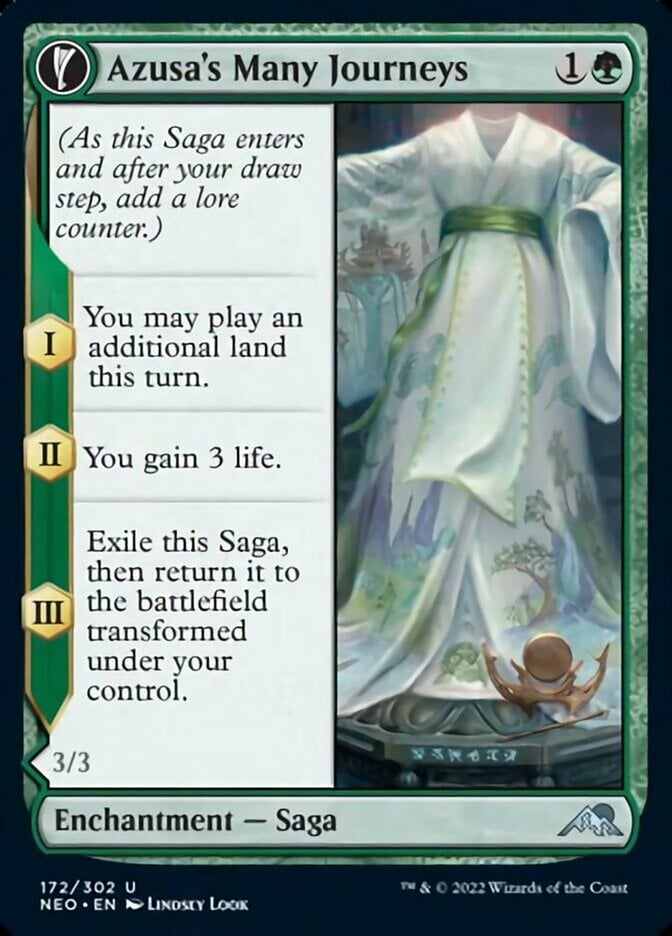

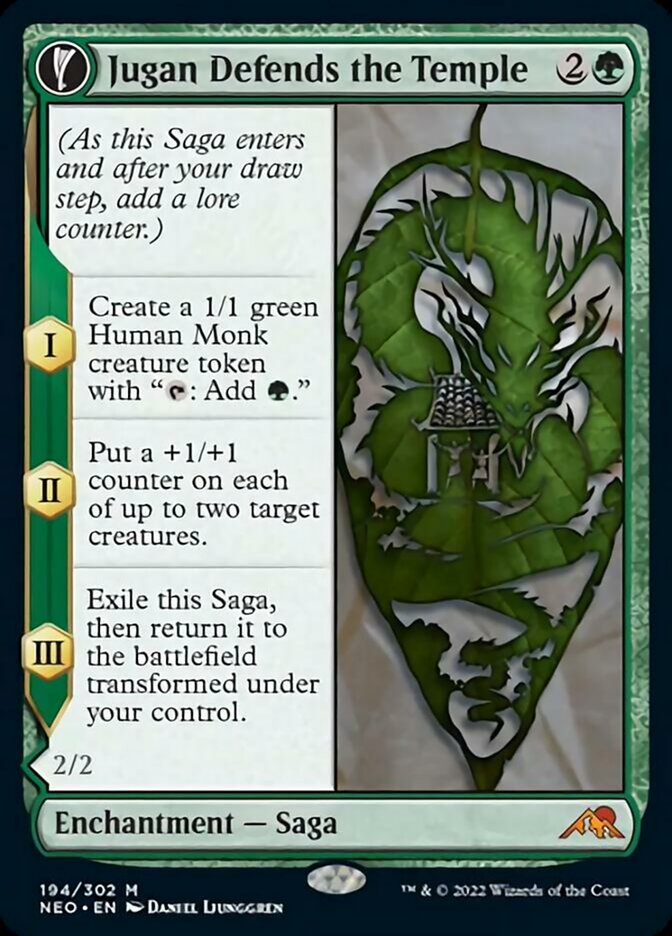

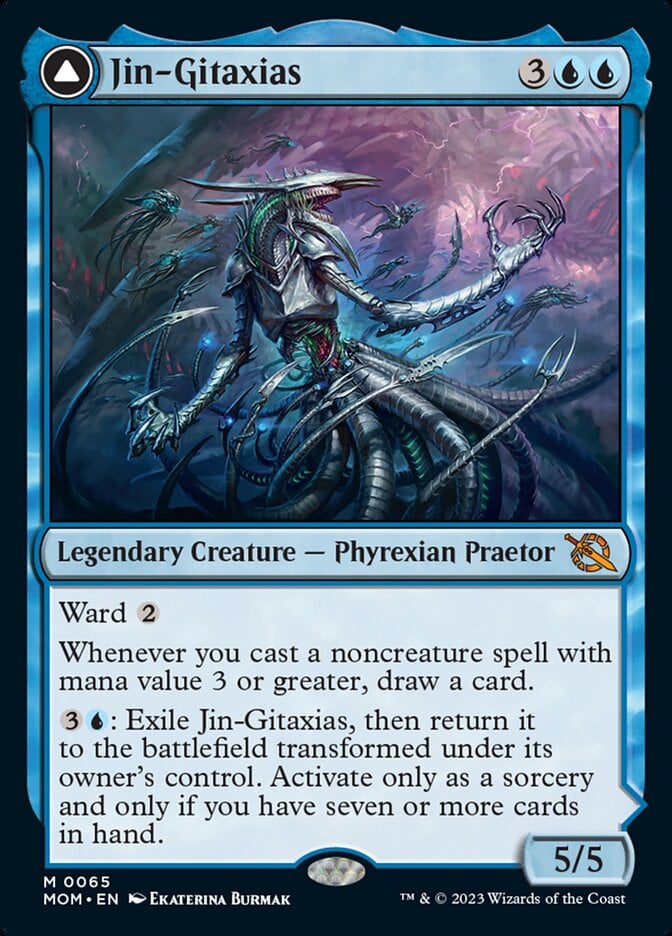


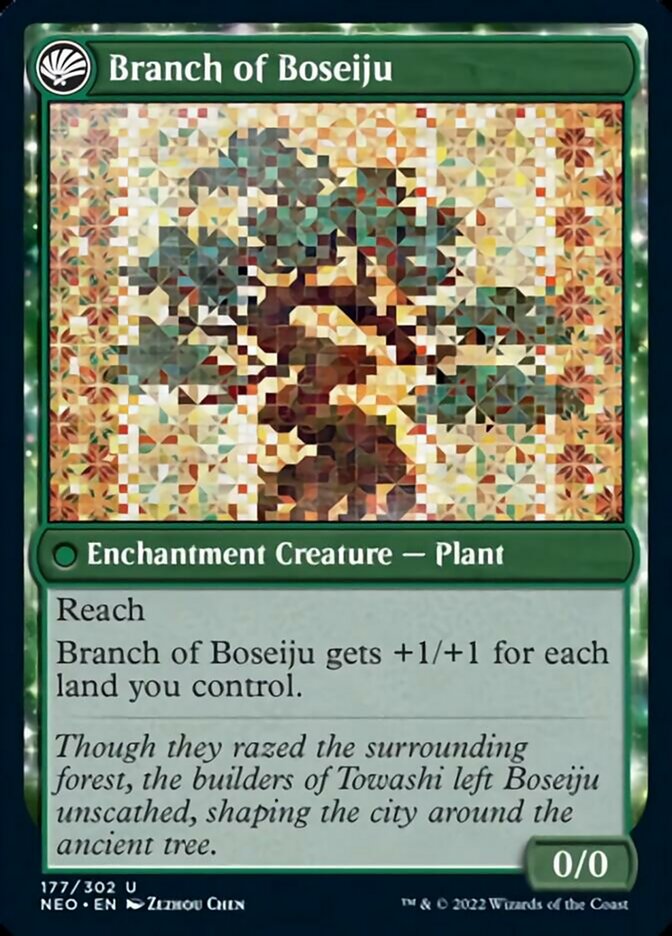
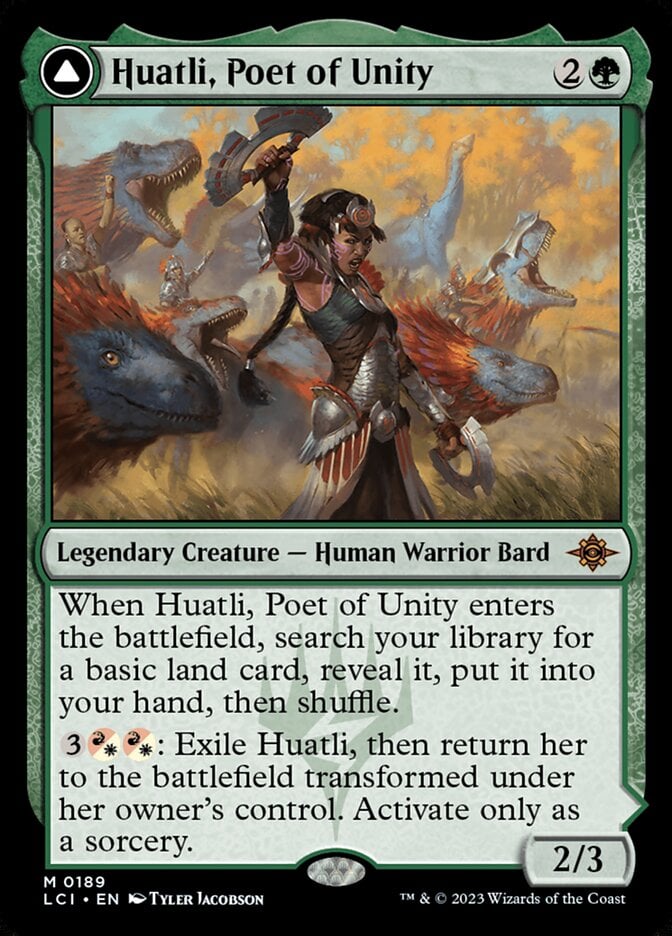

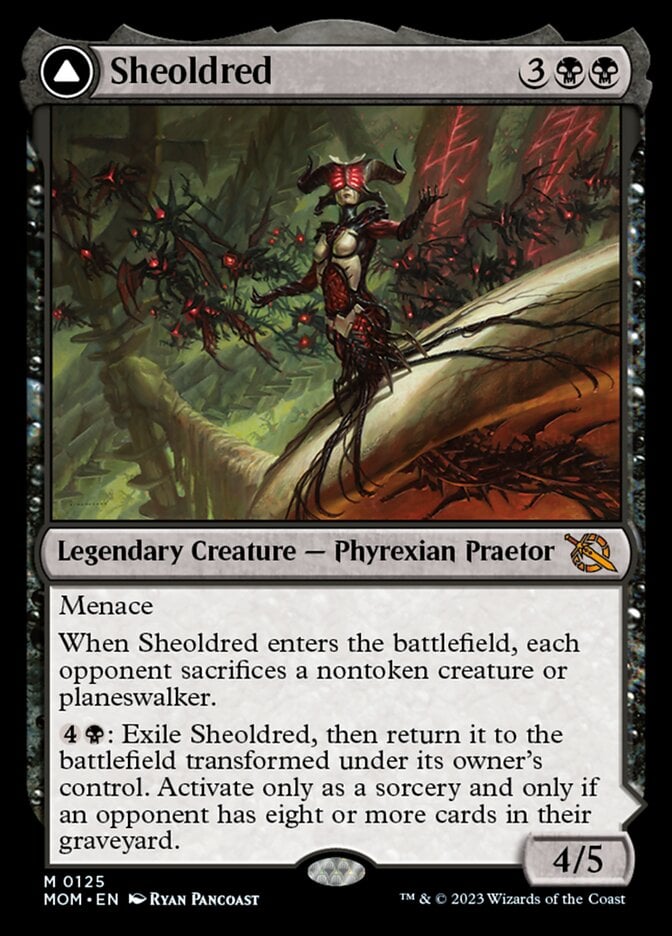

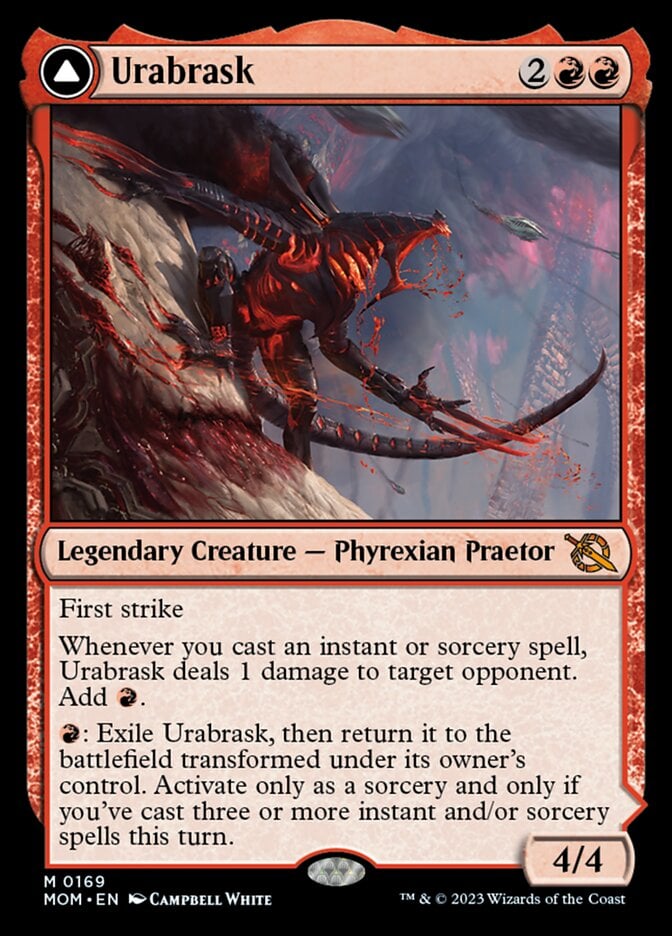


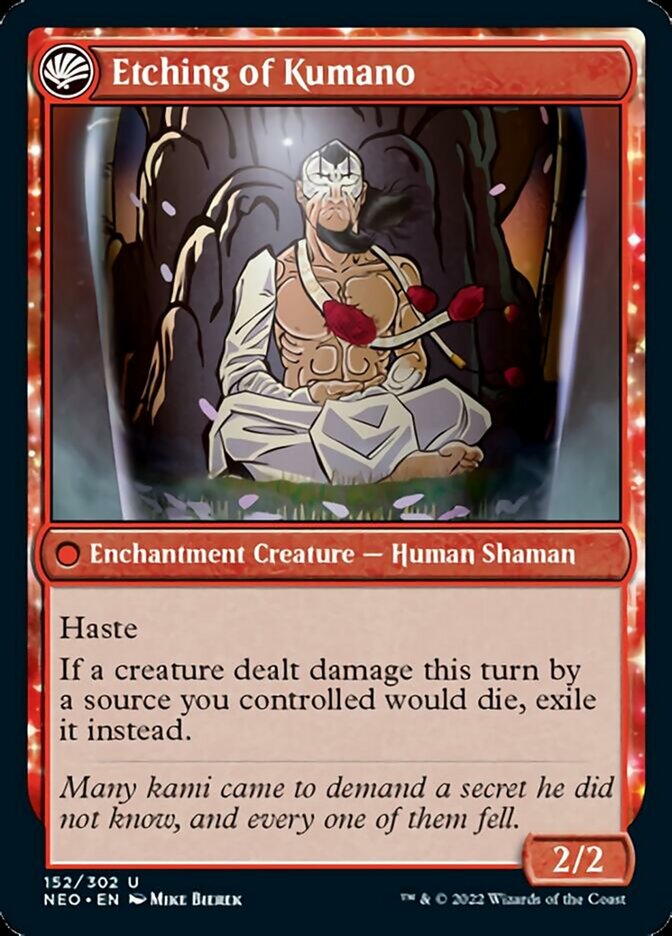

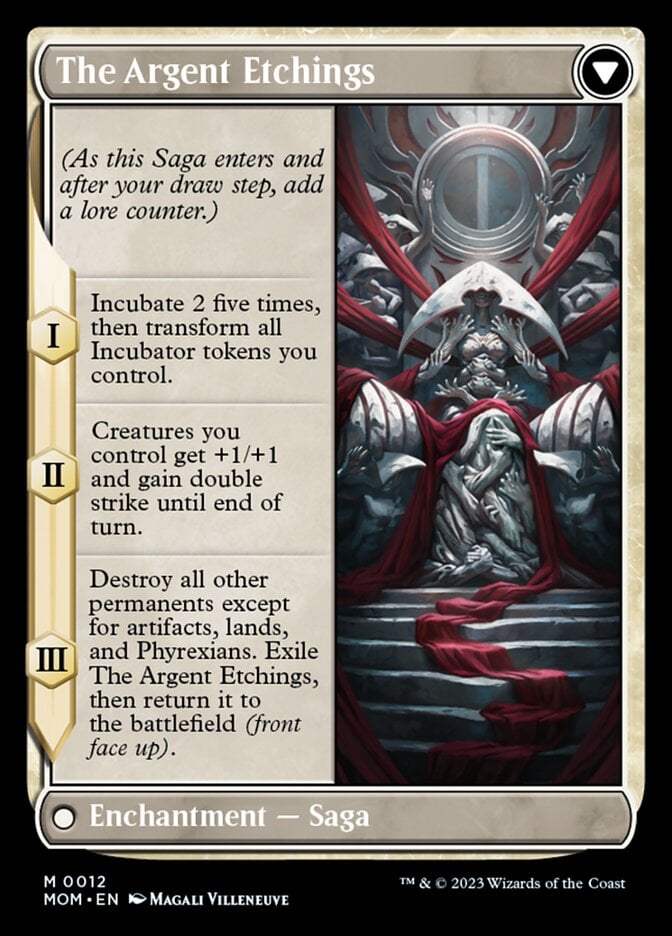
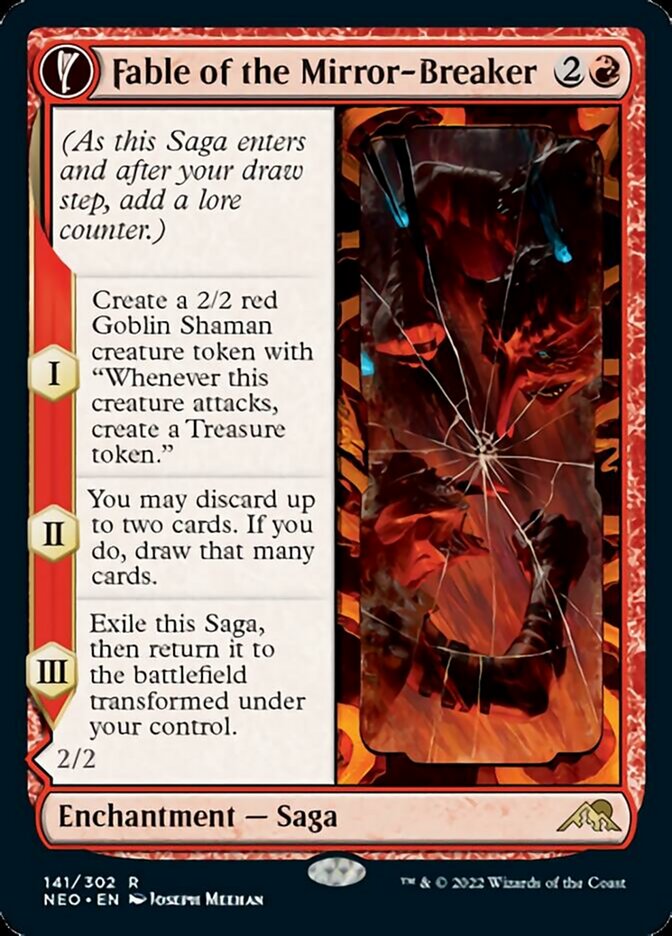


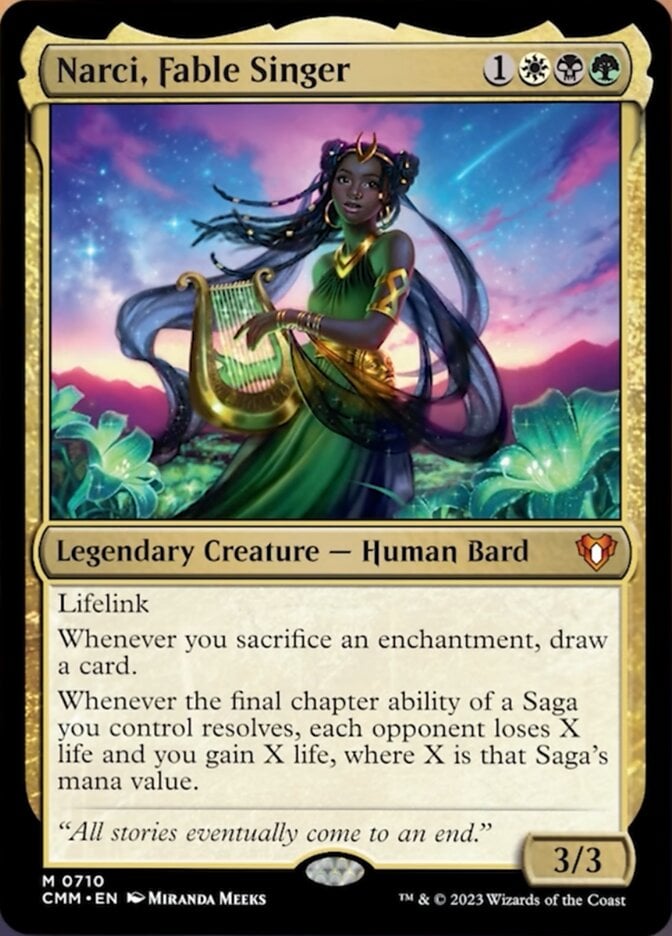

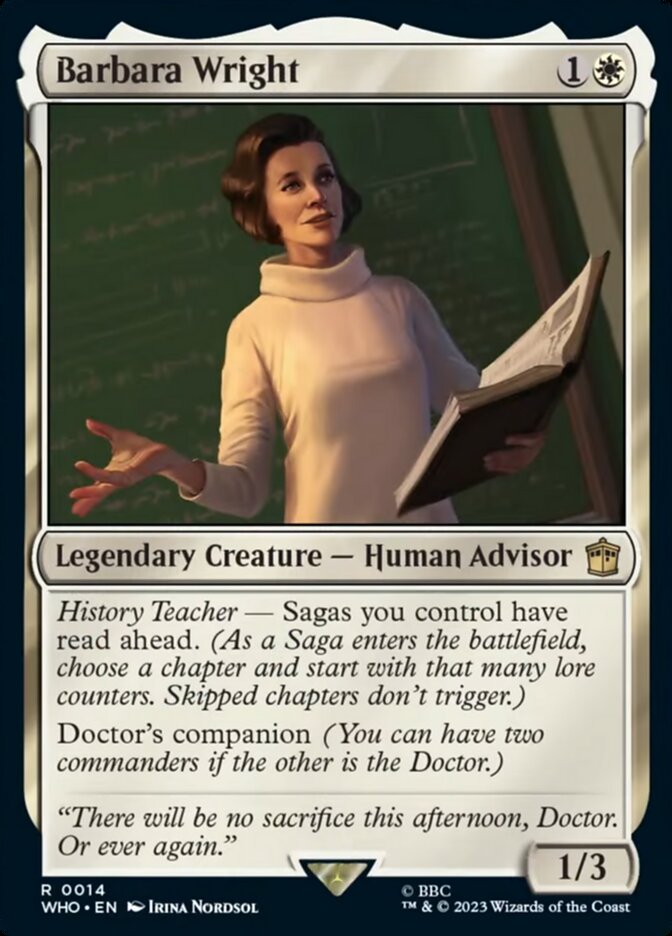
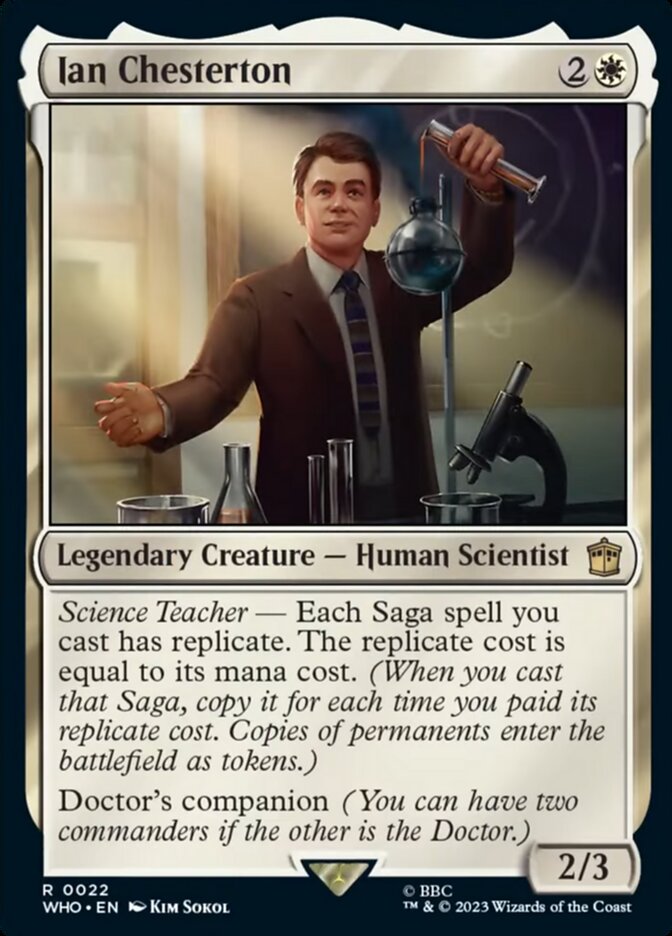


Add Comment